Microactuator Systems (MAS)
Our interdisciplinary research is on smart materials and their implementation in actuator and sensor systems at the micro- and nanometer scale. Smart materials are characterized by their multifunctional performance, which are caused by a strong coupling of their mechanical, thermal, magnetic and electrical properties. Important examples are thermal and magnetic shape memory alloys, piezoelectrics, thermo-magnetic as well as multiferroic materials.
Our research contributes to the research program 3: "Materials Systems Engineering" (MSE), Topic 1: "Functionality by Information-Guided Design: From Molecular Concepts to Materials", in the research field „Information“ as defined by the Helmholtz Association. Link to MSE website. The focus is on multilayered film structures to achieve functions like bistability, multistability and intrinsic sensing.
Further research activities are in thermal energy technologies at miniature scales covering elastocaloric cooling, heat pumping and thermo-magnetic power generation, which are funded by the Zeiss foundation, the EU and DFG.
Further information on our research topics can be found at the following group leaders’ pages: Jingyuan Xu (Link), Joel Joseph (Link)
Research
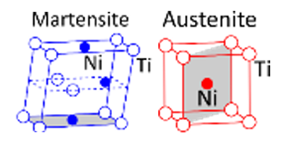 |
Thermal and Magnetic Shape Memory AlloysShape Memory Alloys (SMAs) can be reversibly deformed by strain values exceeding 10% and still recover their original shape by heating (thermal shape memory effect) or by applying a magnetic field (magnetic shape memory effect). We characterize novel SMA films and develop simulation models to describe their multifunctional performances. |
|
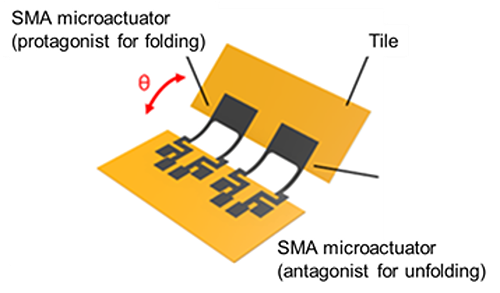 |
Origami-inspired microactuator systemsOur research covers the design, microfabrication, and characterization of coupled Shape Memory Alloy (SMA) folding microactuators, with the aim of enabling Origami-inspired re-programmable microactuator systems. These systems consist of microscale tiles connected by SMA microactuators. This technology should enable the reversible formation of various 3D shapes on demand and, thus, adaptive performance in a changing environment opening up potential applications in fields such as robotics and medicine. |
|
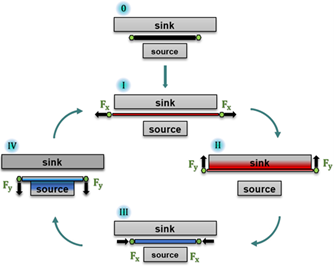 |
Elastocaloric Cooling Based on Natural RubberElastomers like natural rubber (NR) which show a pronounced elastocaloric effect may provide a cost-effective solution for cooling applications with low loading forces and excellent fatigue resistance. Our research focuses on design, development, and prototyping of high-performance elastocaloric cooling devices. |
|
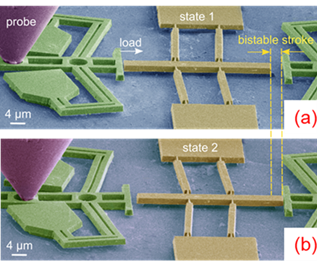 |
Micro- and NanoactuatorsWe are developing mechanically active micro- and nanostructures showing sensing and actuation functions to pave the way towards a new generation of smart nanosystems. This research includes the development of novel fabrication processes and of novel in-situ measurement methods to characterize scaling and size effects. |
|
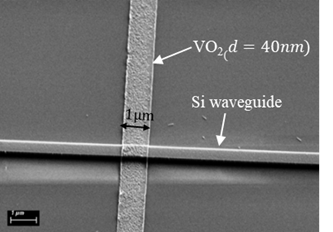 |
Vanadium Oxide (VO2) NanostructuresAmong the known functional ceramics exhibiting the shape memory effect, VO2 is of special interest, as it combines multifunctional properties like a metal-insulator transition at 68°C, thermoelasticity and superelasticity with a large effect size. We investigate novel oxide shape memory films and corresponding nanoactuators based on the reversible monoclinic / tetragonal transformation in vanadium oxide (VO2) and (V-M)O2 compounds. |
|
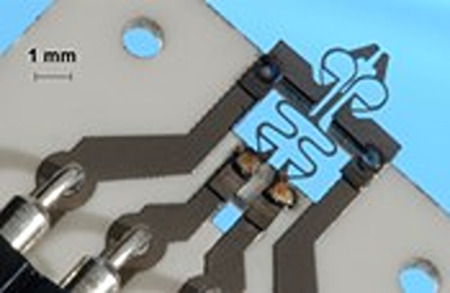 |
Multifunctional DevicesIn collaboration with our spin-off memetis (LINK), we develop novel SMA microdevices including microvalves, microgrippers and microswitches. Examples of previous research:
|
Research Areas
DFG Priority Programme
We are coordinating the DFG Priority Program “KOMMMA”, which bundles the research of 18 Principal Investigators over 6 years. Objectives of this interdisciplinary program are to show up new methods and concepts to understand the complex coupling and synergy effects in coupled microactuator systems as well as to fabricate platforms for cooperative and/or multistage microactuator systems. LINK: https://www.spp-kommma.de/24.php
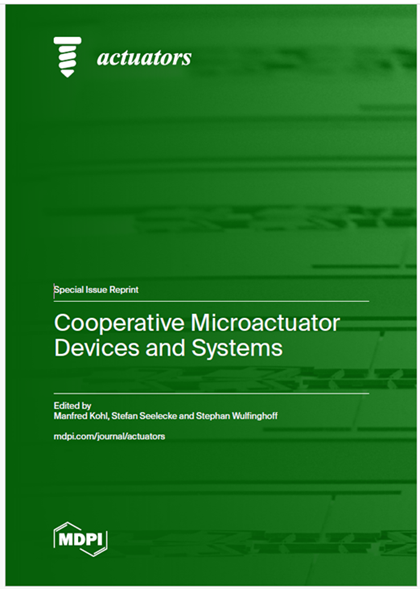
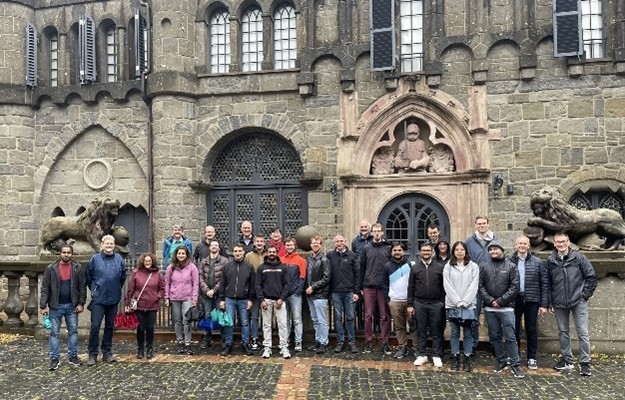
Deutsche Forschungsgemeinschaft (DFG) decided to establish the Priority Programme SPP 2206, which will be funded for 2x3 years.
Objectives of this interdisciplinary Priority Programme are to show up new methods and concepts to understand the complex coupling and synergy effects in coupled microactuator systems as well as to fabricate platforms for cooperative and/or multistage microactuator systems. The development of bi-/multistable mechanisms will be encouraged.
Link to the SSP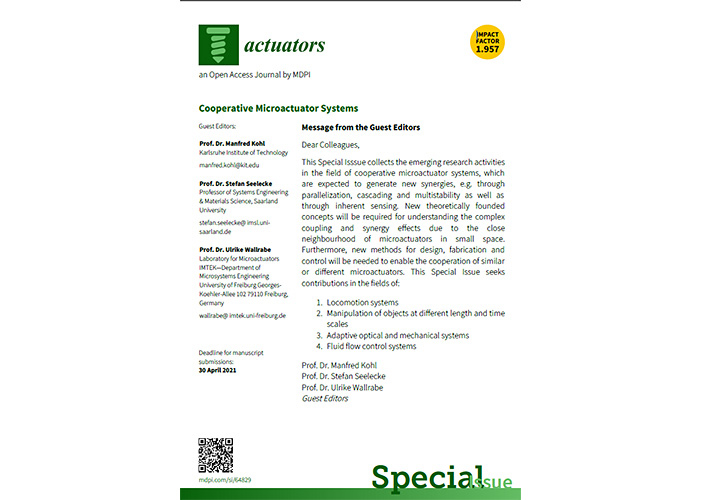
Guest editors: M. Kohl, S. Seelecke, U. Wallrabe
This Special Isssue collects the emerging research activities in the field of cooperative microactuator systems, which are expected to generate new synergies, e.g. through parallelization, cascading and multistability as well as through inherent sensing.
More…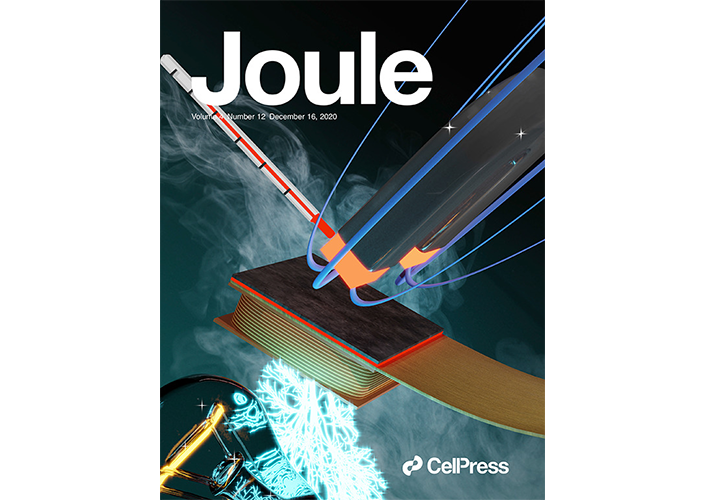
Researchers at KIT and Tohoku University (Japan) succeeded in significantly enhancing the electrical power of thermomagnetic generators with respect to footprint. This research is the front topic of the December 2020 Issue of the Energy Journal ‘Joule’.
Original Publication: Joel Joseph, Makoto Ohtsuka, Hiroyuki Miki, and Manfred Kohl: Upscaling of Thermomagnetic Generators Based on Heusler Alloy Films. Joule, 2020.
DOI: 10.1016/j.joule.2020.10.019

Awarded for the Development an Realisation of an Ultra-compact Photodetector: Prof. C Koos, Prof. M. Kohl and Physicist S. Mühlbrandt (from left to right, Photo: T. Niedermüller, GSS).
Video
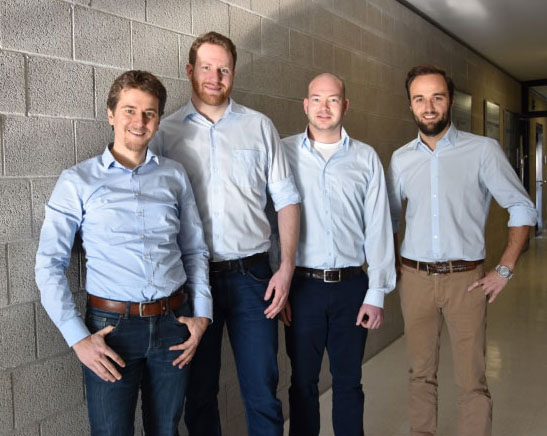
M. Gültig, H. Ossmer, C. Megnin and C. Wessendorf from the start-up company memetis became founders of the month July 2017 and won the Elevator Pitch BW 2017 (Photo: KIT).
More…
